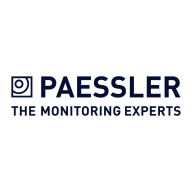

PRTG Network Monitor and Meraki Dashboard are prominent contenders in the network monitoring category. PRTG seems to have an edge when it comes to deployment speed and detailed analytics, while Meraki shines in user-friendliness and cloud-based centralized management.
Features: PRTG Network Monitor offers rapid deployment, scalability, and a wide array of monitoring sensors that require little customization. It supports diverse network setups and provides a solid alerting system. Users appreciate its detailed analytics and flexibility. Meraki Dashboard is noted for its ease of use and centralized management, offering cloud-based remote monitoring, a single-pane-of-glass view, and seamless integration across devices.
Room for Improvement: PRTG Network Monitor could enhance its desktop application and expand its cloud-native monitoring options. Improved integration with third-party services and more comprehensive reporting features are also suggested. Meraki Dashboard users suggest VPN feature enhancements, UI improvements for better navigation, and a more flexible pricing model. Expanding security features and integrating with non-Meraki products could also increase its appeal.
Ease of Deployment and Customer Service: PRTG Network Monitor is primarily on-premises, requiring in-house setup, with some hybrid options. Its straightforward setup is praised, though limited remote support can be a drawback. Meraki Dashboard offers more flexibility with cloud-centric deployment, simplifying remote management and reducing hardware needs. It has an intuitive setup, but customer service reviews are mixed, partly due to high licensing fees.
Pricing and ROI: PRTG Network Monitor is competitively priced, striking a good balance between cost and features, making it viable for smaller companies. Licensing costs can rise with feature expansion. Its ROI is noted in reduced downtime and time savings. Meraki Dashboard, though more expensive, offers value through its comprehensive management and ease of use. Pricing may be justified by operational efficiency gains, though the benefits may not always outweigh costs unless system simplicity is crucial.
It provides accurate data for utilization, allowing us to monitor and optimize our investments in WAN connection capacity.
After introducing PRTG Network Monitor, we have saved time, and it's easy for everybody to monitor everything.
I have seen a return on investment with PRTG Network Monitor as it has saved a lot of time, and its monitoring has reduced manpower requirements, which has been helpful.
The support response time can be slow, sometimes taking up to fifteen hours.
When our site went down, Cisco's technical support was very responsive and effective, so I would rate them nine out of ten for their support.
They are instantly available for technical support from Meraki Dashboard.
They resolve our queries 24/7.
The setup process is well-documented, making it easy to deploy.
Tutorials are available so I can manage any issue with PRTG Network Monitor easily.
On a scale of one to ten, scalability is rated as 9.5.
PRTG Network Monitor has the ability to scale and add new devices.
You can install them in each network, even if they are not connected, and it works.
We have not encountered any downtime related to the Meraki cloud feature in the last five years.
We haven't needed vendor support for the last three years, which demonstrates the product's stability.
PRTG Network Monitor is stable in my experience, and I have not encountered issues with crashes or downtime.
PRTG Network Monitor is very stable and requires low maintenance.
There is a need for price reductions in developing countries, as the cost of Meraki is quite high.
The cameras are not connected through Meraki, but all other devices are on Meraki networks.
It provides many insights out of the box without any need to search for them.
They need to improve application performance monitoring, error tracing mechanisms, and log management.
PRTG Network Monitor should provide syslog monitoring since it is not available at this time.
PRTG Network Monitor can sometimes be too detailed and cluttered at the beginning, making it heavy to use.
The cost of the Meraki solution is high, which may not be affordable for smaller companies, especially in developing countries.
If we involve a third-party vendor, the price will definitely go up.
The licensing part is a recurring license for every year, which is very affordable, making PRTG Network Monitor budget-friendly.
Pricing is by the number of devices, not by sensor.
The prices are very high for PRTG Network Monitor.
Meraki Dashboard offers an exceptional centralized management solution that allows easy updates and monitoring of various network features, including bandwidth usage and content filtering.
The most valuable feature for me is the cloud dashboard.
It summarizes everything in one place, which is very important for our organization.
PRTG Network Monitor already provided me with 100 free sensors, which is enough for my network monitoring.
PRTG Network Monitor has a good dashboard that shows each and every piece of information, so we can easily find out what is happening with the systems.
These reports help me in my day-to-day work, and I rely on them because they provide proof during escalation, with exact downtime logs and related information.
| Product | Market Share (%) |
|---|---|
| PRTG Network Monitor | 4.1% |
| Meraki Dashboard | 1.1% |
| Other | 94.8% |


| Company Size | Count |
|---|---|
| Small Business | 22 |
| Midsize Enterprise | 13 |
| Large Enterprise | 25 |
| Company Size | Count |
|---|---|
| Small Business | 57 |
| Midsize Enterprise | 18 |
| Large Enterprise | 43 |
Meraki Dashboard is a comprehensive cloud-based platform that offers centralized management and control for all Meraki networking and security products. It provides a user-friendly interface, allowing administrators to easily monitor and configure their network infrastructure from anywhere. With real-time visibility, troubleshooting becomes effortless, ensuring optimal performance and minimizing downtime.
The intuitive dashboard offers a holistic view of the network, enabling quick identification of potential issues and proactive measures. It simplifies network deployment and scaling, with zero-touch provisioning and automatic firmware updates. The robust security features include advanced threat protection, content filtering, and VPN connectivity.
Meraki Dashboard also offers powerful analytics and reporting capabilities, providing valuable insights into network usage, application performance, and user behavior. With its seamless integration and scalability,
Meraki Dashboard is the ideal solution for organizations of all sizes, ensuring efficient network management and enhanced productivity.
PRTG Network Monitor runs on a Windows machine within your network, collecting various statistics from the machines, software, and devices which you designate. PRTG comes with an easy-to-use web interface with point-and-click configuration. You can easily share data from it with non-technical colleagues and customers, including via live graphs and custom reports. This will let you plan for network expansion, see what applications are using most of your connection, and make sure that no one is hogging the entire network just to torrent videos.
To monitor a large IT environment, it's important to be able to scale PRTG up. Paessler PRTG Enterprise Monitor includes all the proven capabilities of PRTG Network Monitor, which are enhanced by exclusive ITOps Board for a service-oriented, central overview of multiple PRTG servers.
We monitor all Network Monitoring Software reviews to prevent fraudulent reviews and keep review quality high. We do not post reviews by company employees or direct competitors. We validate each review for authenticity via cross-reference with LinkedIn, and personal follow-up with the reviewer when necessary.